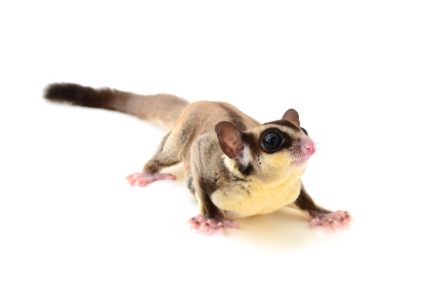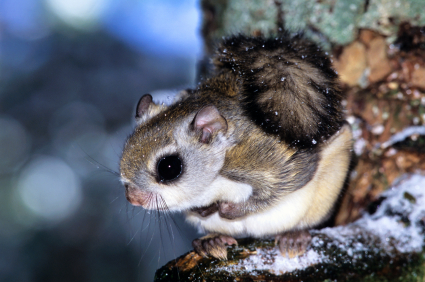Identifying Flying Squirrels
Flying squirrels are sometimes mistaken for other tree-dwelling species because of their small, rounded heads, large eyes, and prominent ears. However, the furry, parachute-like membrane that extends between their wrists and ankles makes them stand out. This allows the pests to glide on air currents for short distances, a skill no other squirrel species can match. The northern flying squirrel is reddish-brown in color, while the southern variety is olive gray. Both species grow between eight and twelve inches in length and weigh about two to five ounces.

Appearance in Yards
In most cases, flying squirrels appear in yards to look for food or shelter. Although they prefer dense forests, the pests will settle for any area that has trees or elevated nesting sites like roofs and attics. Since the rodents are exclusively active at night, most people do not see them and instead attribute any damage they cause to mice.
Problems Associated with Flying Squirrels
Like other tree squirrels, flying squirrels may travel across powerlines and gnaw on wires. Damage can worsen if they nest inside attics, where the pests may chew on the walls, insulation, and doors. They also dig up yards and gardens when they forage for food. Since these nocturnal animals can be hard to locate during daylight hours, it is best to contact the professionals at Critter Control to properly identify and manage all flying squirrel problems.
Flying Squirrel Pictures

Get them out.
Keep them out.®
Experiencing a wildlife or pest issue? We can help! Complete this form and your local Critter Control® office will contact you to assist.
- Flying Squirrels in the Attic
- Flying Squirrels in the House
- Flying Squirrels in the Walls
- Flying Squirrel Sounds
- Flying Squirrel Droppings
- Flying Squirrel Traps & Deterrents
- Flying Squirrel Nests
- Do Flying Squirrels Carry Diseases?
- Do Flying Squirrels Fly?
- Do Flying Squirrels Hibernate?
- Flying Squirrels on the Roof
- Where Do Flying Squirrels Nest?